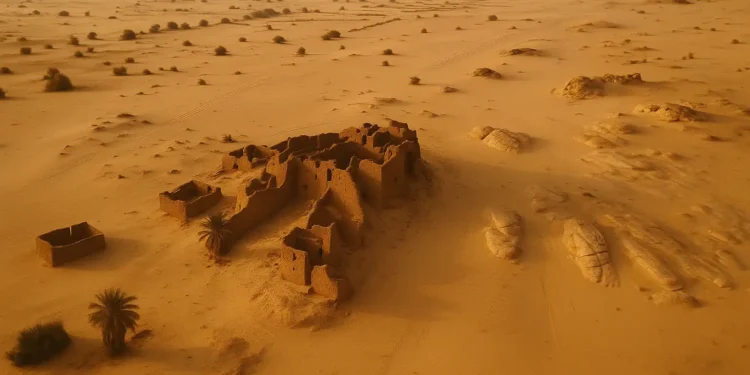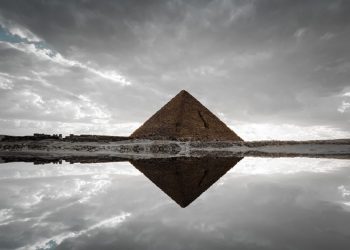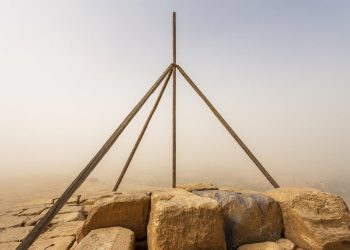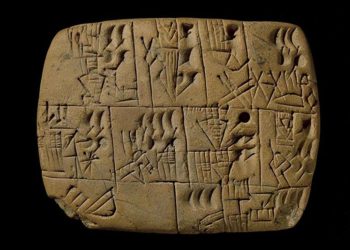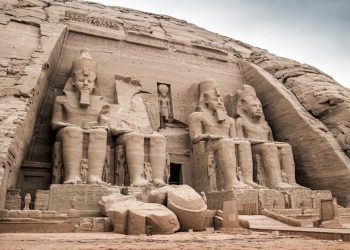Ancient cities lost to desert sands still whisper their forgotten stories across the empty landscapes of Arabia, Africa, and beyond. Once alive with trade, faith, and dreams, these places now lie abandoned, shaped by the slow but unstoppable forces of climate change and shifting rivers. Their ruins offer more than a glimpse into the past. They offer lessons — about survival, about change, and about the delicate bond between human ambition and the environment.
How did these once-thriving cities fall? And what lessons might their stories still offer us today? Let’s jump right in!
Ubar: The lost city of Arabia
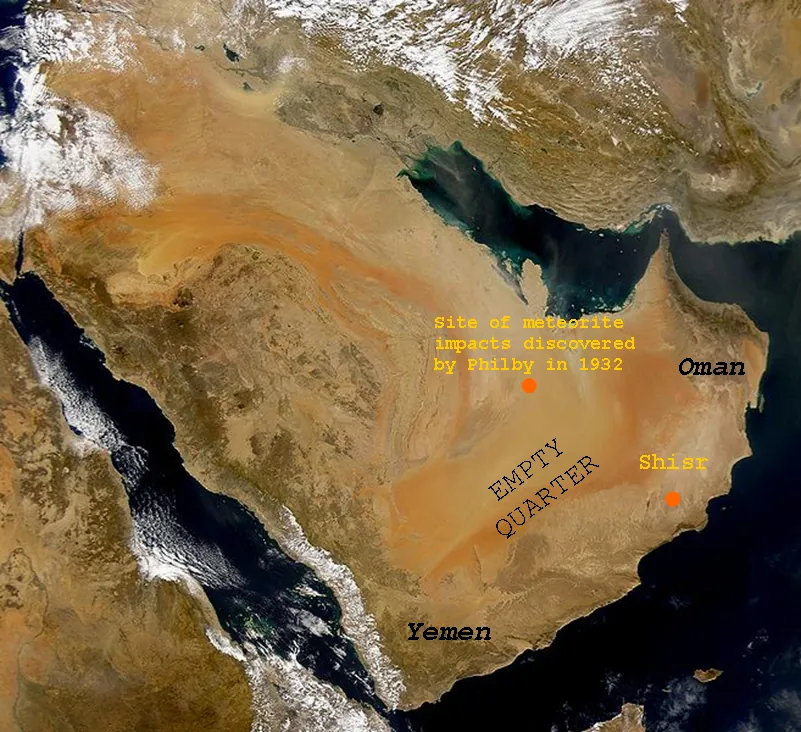
In the remote heart of the Arabian Empty Quarter, legends long whispered of a city called Ubar — a place of riches and splendor that mysteriously vanished. Referred to in the Quran as Iram of the Pillars, Ubar was said to have been punished for its pride and wealth.
For centuries, explorers searched fruitlessly for its remains. Then, in the 1990s, satellite imaging led a team supported by NASA to a remarkable discovery: ancient caravan routes converging at a site near Shisr in Oman. Excavations revealed the ruins of a fortified outpost built atop a limestone cavern.
Over time, the cavern collapsed, creating a sinkhole that undermined the settlement. As the local climate grew harsher and the sands advanced, Ubar was slowly erased from the surface. Today, visitors standing at the site gaze into the void left by nature’s slow but unstoppable forces, seeing only echoes of the city that once thrived.
Djado: Ghost fortresses swallowed by the Sahara
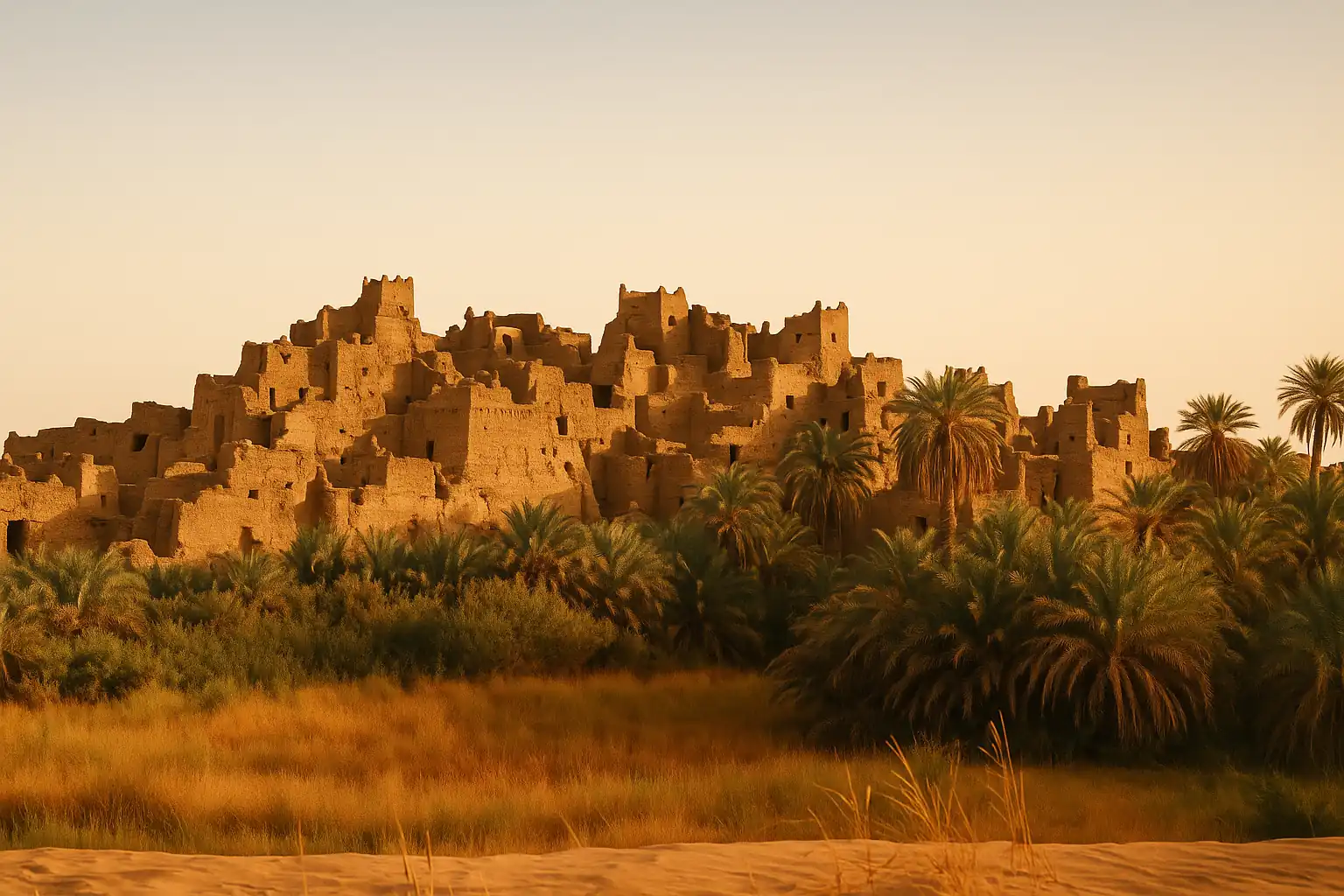
Far across the desert in Niger, the crumbling ruins of Djado rise eerily from the sand. Built of stone and mudbrick, the abandoned fortresses and settlements hint at a time when this region supported vibrant communities.
The origins of Djado are still shrouded in mystery, but historians believe it flourished between the 9th and 15th centuries. As the Sahara expanded southward, wells dried up and agriculture became impossible. Conflict and raids by nomadic groups further weakened the city’s ability to survive.
By the time European explorers reached the area in the 19th century, Djado was little more than a ghost town. Its silent towers, half-buried by dunes, now stand as a stark monument to how quickly nature and human conflict can erase a civilization.
Ghirza: Rome’s desert outpost that lost the fight
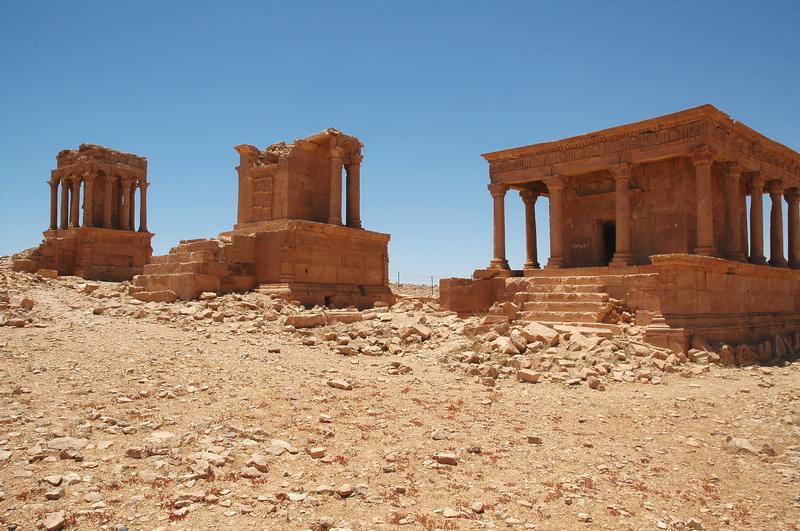
In the deserts of modern Libya lies Ghirza, a Roman outpost that once blossomed with life against all odds. During the second and third centuries AD, the Romans engineered elaborate irrigation systems to capture rare desert rains. These systems allowed farmers to grow olives, figs, and grains in what seemed an impossible landscape.
Ghirza prospered for centuries, its tombs and temples testifying to the resilience of its people. But when the Roman Empire’s influence in North Africa waned, so too did the fragile systems that sustained the city. Without maintenance, the canals and dams failed. The desert, once held back by Roman ingenuity, reclaimed the land.
Today, the remnants of Ghirza’s farms and mausoleums lie scattered under sand, a testament to both human ambition and the power of natural forces to undo it.
The Indus Valley’s lost desert cities

Thousands of kilometers east, along the drying banks of ancient rivers, the cities of the Indus Valley Civilization tell another story of loss. Between 3300 and 1300 BCE, cities like Mohenjo-daro and Harappa flourished with advanced urban planning, intricate trade networks, and sophisticated water management.
However, the rivers that had nourished them — particularly the Sarasvati — began to shift or dry up due to tectonic changes and climatic shifts. Agriculture faltered. Trade declined. Over time, the once-great cities were abandoned.
Today, many Indus Valley sites lie near the margins of the expanding Thar Desert. The slow creep of aridity helped erase their memory from living history until archaeological discoveries brought them back into the light.
Chinguetti: A city fighting to survive the sands
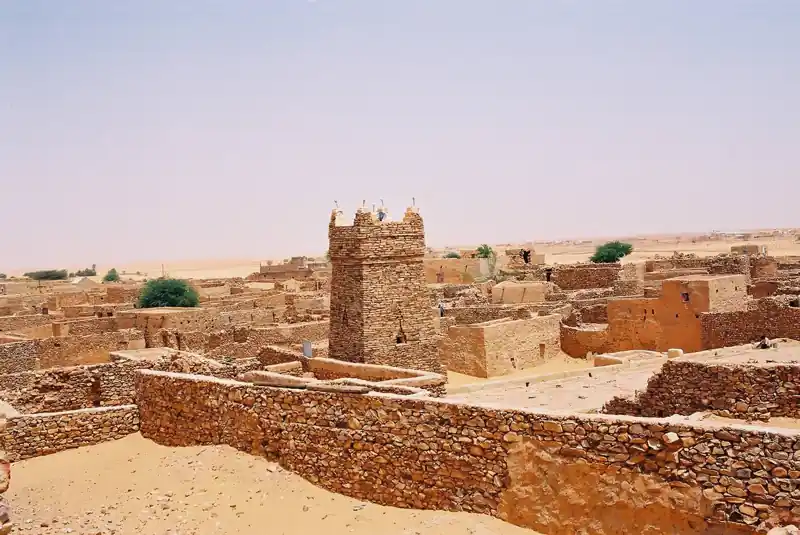
Unlike the ancient cities already lost to history, Chinguetti in Mauritania still struggles against the desert’s relentless advance. Founded in the 13th century as a stopover for pilgrims heading to Mecca, Chinguetti became a center of Islamic learning, known for its libraries filled with priceless manuscripts.
Over the centuries, shifting sands have threatened to bury the city. Entire neighborhoods have vanished beneath dunes. Despite efforts to protect the surviving buildings, the future of Chinguetti hangs in the balance.
Every year, more of the old city succumbs to the desert. Yet within its crumbling walls, a spirit of resilience persists — a living battle between memory and oblivion.
How ancient climates turned green worlds into desert
Thousands of years ago, much of North Africa looked nothing like it does today. Where we now see endless dunes and empty skies, there were once rivers winding through grasslands, lakes that stretched to the horizon, and plains filled with life. People built villages along the water’s edge. They hunted, farmed, and thrived under a generous sky.
Scientists call it the African Humid Period, a time when rainfall nourished the land and deserts had not yet taken hold. For thousands of years, it seemed like the good times would last forever.
But slowly, almost too slowly to notice at first, the world began to change. The rains shifted. The rivers ran thinner, then stopped. Lakes shrank into salty basins. What had once been green turned brown, then to dust. Life followed the water as best it could, but some communities stayed too long. Others had nowhere left to run.
As the land hardened and the wells went dry, cities faded. Some were abandoned to the desert without a fight. Others clung on, hoping for a return of the rains that never came. Djado in Niger, once a fortress against both man and nature, became a ghost town. Across the continent and beyond, the same story played out in different ways. Rivers changed course. Crops failed. Civilizations fell silent.
The deserts we know today are not just natural landscapes. They are the graves of lost worlds, buried one grain of sand at a time.
What the silence of the desert still shows us
When you walk through the remains of these forgotten cities, the first thing you notice is the stillness. Walls worn down by sand and time. Streets that once carried voices and footsteps now empty under the sun.
These places were not abandoned overnight. Most faded slowly, as water sources disappeared and trade routes shifted. Some were left behind when life simply became impossible. Others were kept alive for a time, even as the desert grew closer year by year.
What remains today is not just stone and dust. It is evidence of how much people once adapted to their world — and of how even great efforts can be undone when the environment changes faster than communities can adjust.
The desert does not erase history all at once. It covers it gradually, over generations. These cities remind us that survival often depends on how well we notice and respond to change, long before it becomes too great to escape.



